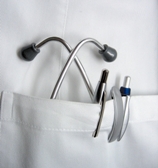A History of nursing
A History of nursing
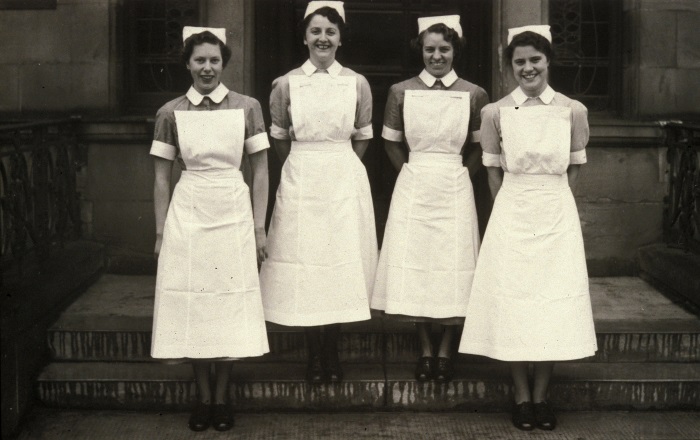
For many nurses, the skills of nursing or caring lie at the heart of their work.160 Until the mid-nineteenth century, nursing was not an activity, which was thought to demand either skill or training. Nor did it command respect.
those who were too old, too weak, too drunken, too dirty, too stupid or too bad to do anything else
As Florence Nightingale was to put it, nursing was left to 'those who were too old, too weak, too drunken, too dirty, too stupid or too bad to do anything else'.161
The intimate body services to be done for the patient were considered to be unseemly or immodest for young unmarried or well-bred females, especially if not a family member. Cleaning and feeding of another person were regarded as domestic tasks performed by servants.
Also, before 1880, the hospital treatment of illness was fairly rare. Where home services were adequate, a sick person was attended by the family doctor and nursed either by female family members or servants. However, from the middle of the nineteenth century, the discovery and application of anaesthetics and antiseptic surgery advanced medical technique and allowed all classes to seek treatment in hospitals. From the 1860s onwards, a series of nurses' training schools began to produce fairly large numbers of educated women who were eagerly accepted by hospital authorities whose medical officers, patients and public opinion in general were demanding higher levels of nursing skill in the wards.162
Innovations in patient care
While Lister was developing his system of antiseptic surgery in Glasgow, there were further innovations in patient care in the wards of the Royal. The first steps were taken to improve the training of nurses and the calibre of women entrusted with nursing duties. Florence Nightingale (1820-1910) was hailed as a heroine for her work with thirty volunteers in caring for troops in the Crimean War.
There were three types of hospital in Glasgow at that time.
- Voluntary Hospitals which were managed by independent boards of directors and funded from public donations.
- Poor Law Hospitals which were managed and funded by the local parish Poor Law authorities.
- Municipal Hospitals which were provided by the Glasgow Local Authority and used entirely for the treatment of infectious disease.
I admit that at present nursing is the last resource of female adversity. Slatternly widows, runaway wives, servants out of place, women bankrupt of fame or fortune from whatever cause, fall back on hospital nursing
Municipal Hospitals
The Local Authority, the Police Board, opened its first hospital in 1865. Its nurses were considered amongst the worst available as the risks attached to fever nursing were great. Dr J.B. Russell, then Medical Superintendent of the hospital expressed himself forcefully, 'I admit that at present nursing is the last resource of female adversity. Slatternly widows, runaway wives, servants out of place, women bankrupt of fame or fortune from whatever cause, fall back on hospital nursing'.
In the hospital's first year, Russell wanted to introduce 'a more systematic means of instruction' for his nurses. Although the typhus emergency of that year proved too distracting he instituted a few practical ground rules for the selection and training of nurses. He attempted to select applicants with no nursing experience but of good character who could be trained to an acceptable level. Training consisted only of reading and of some practical instruction. All nurses were supplied with Florence Nightingale's book and were taught by example by one of Russell's good nurses. In 1881, training was put on a more formal footing. Nurses were appointed as full members of staff only after a year's training, which had lectures, practical demonstrations and work experience ending with a written and oral examination. Candidates who passed were awarded a certificate of Proficiency in Nursing of the first, second or third class.
Fever nurses spent an average of fourteen hours on duty and had an afternoon off every fortnight
Parallel to improvements in training were advances in living conditions, wages and working hours. Fever nurses spent an average of fourteen hours on duty and had an afternoon off every fortnight, though they had an advantage in that rough domestic chores were excluded from their duties from the beginning.
Poor Law Hospitals
Nursing in Scottish Poorhouses in the mid-nineteenth century was almost entirely done by the inmates themselves, people who were unpaid, unsuitable and untrained for the task. Between 1875 and 1896 the central Poor Law Authority in Scotland Board of Supervision issued many circulars to local parish authorities urging them to introduce paid, trained nurses to their poorhouse hospitals. The Board of Supervision in 1885 organised a register of trained nurses who would be acceptable to them for parochial employment. The nurses had to satisfy requirements on age and qualifications. The real incentive lay in a money reward if parishes co-operated. Part of the cost of the nurses could be charged to the government's annual medical relief grant.
The Barony in Glasgow was one of the first parishes to adopt the Board's recommendations. In 1880, the Barony Board employed five paid nurses and a female superintendent. The nursing staff were divided into three categories, namely the trained Staff Nurses (day and night), probationers who were nurses in training, and pauper assistants who cleaned the wards. Training continued to be important, probationers had to take written and oral examinations before being accredited as trained nurses. The resident medical officer was interested in nurses training and inaugurated a short course of lectures for nurses which developed in the next ten years into regular twice weekly lectures for two periods of six months each. Progress was much slower in the other two Glasgow Parishes, Govan Combination Parish and Glasgow City Parish.
Voluntary Hospitals
Before the 1870s in the voluntary hospitals, the most valued qualities if found for a nurse were gentleness and respectability. The Royal Infirmary would try bribery, giving ‘prizes to a day and a night nurse in each department for good conduct, kindness to the patients and cleanliness in the wards’ rather than provide extensive education or training.
Views began to change in the 1870s and 1880s in the appointment of matrons or lady superintendents, who themselves had received a systematic training in nursing by the larger hospitals. Before this, their duties had been mostly housekeeping. It became easier to organise systematic training for nurses under matron's control. This usually consisted of a course extending over two and later three years. Apprenticeship formed most important part of training with the trainee or probationer carrying out routine work under the supervision of a sister or staff nurse. Lectures from the medical staff on subjects such as bandaging or the use of common medical instruments supplemented practical work.
Lectures from doctors began in the
- Maternity Hospital in 1871
- Western Infirmary in 1875
- Royal Infirmary in 1878
- Sick Children's Hospital in 1888
They continued to be given voluntarily and gratis by the doctors.
Hospitals which provided this pattern of education became recognised training schools for nurses. However in the 1890s, several people in Glasgow including the eminent surgeon, Dr William Macewen began to suggest that more was required than this simple basic training if nurses were to respond to medical developments.
Dr Macewen believed that the modern nurse needed more than a good liberal education. She must be given a specific grounding in anatomy, physiology, therapeutics, medicine and surgery 'sufficient to enable her to follow with intelligence the movements of the disease and the treatment she was entrusted to carry out.'
Extensive improvements in nursing training began in Glasgow first in the Royal Infirmary and were very much due to the energy and determination of Mrs Rebecca Strong, the Matron. The Infirmary's new regulations in 1893 required reasonable evidence of educational attainment before nursing applicants could be accepted. Candidates had to take a preliminary formal examination or produce Leaving Certificates from the Scottish Education Department. Once accepted into the training school, probationer nurses received a more thorough and technical education than that which was currently offered even in the most respected of British Training Hospitals. It involved two courses in the theory of anatomy, physiology and hygiene and two on practical nursing. All lecture courses were accompanied by oral or written examinations and a class certificate was given at the end of each set.
Other British Hospitals around the turn of the century quickly adopted this more rigorous and theoretical approach.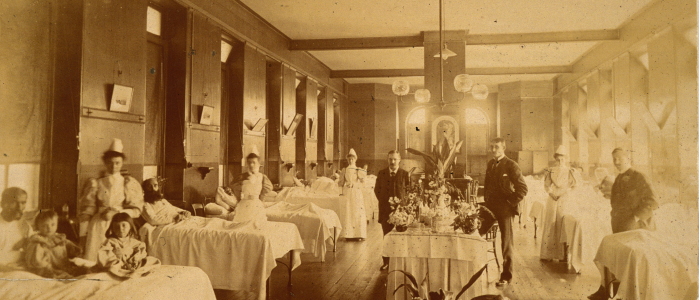
Parallel with the new training scheme were corresponding changes in financial reward and other indicators of status. Accommodation improved along with nurses' hours which decreased from an average of fifteen hours a day in the 1870s to an average of eleven in the 1890s.
The nature of their duties changed too, with domestic chores being limited or ended to allow the nurse to concentrate almost exclusively on patient care. Beginning in the 1870s as the 'Nightingale Revolution' filtered through, Glasgow' s hospitals took the initiative in sponsoring greater improvements.
Paediatric nurses
An important function of the Royal Hospital for Sick Children was the in the training and education of nurses in the special skills required to nurse ill children.
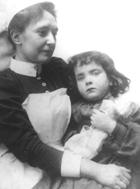
Later, one nurse, Sister Laura developed a baby food and was fondly remembered in a children's rhyming jingle in a ball playing game.
Sister Laura walks like this
Pit a pat pat, pit a pat pat.
However, for the male nurse it could be difficult in a female dominated environment. A male nurse found it awkward at times in paediatrics in Yorkhill in the 1980s when there had been few male nurses (reminiscence project).
Sir William Macewen and Mrs Strong
Without the help of Macewen, Mrs Strong might never have established the first preliminary nursing school at Glasgow Royal Infirmary.
In the early 1880s great changes had begun and were imminent in surgery and nursing. Until around 1850, surgery was a matter of screaming pain, stinking pus and hospital gangrene. Nursing care was primitive and nurses were ill paid, ill trained and often of ill repute. The introduction of general anaesthesia in the late 1840s abolished some of the pain of surgery but it was not until 1865 that Lister first instilled carbolic acid into a wound in Glasgow Royal Infirmary that control of wound infection began to be possible. The turning point in nursing was Florence Nightingale's work in the Crimean War in the mid 1850s and the setting up of her own training school in St. Thomas's Hospital in London.
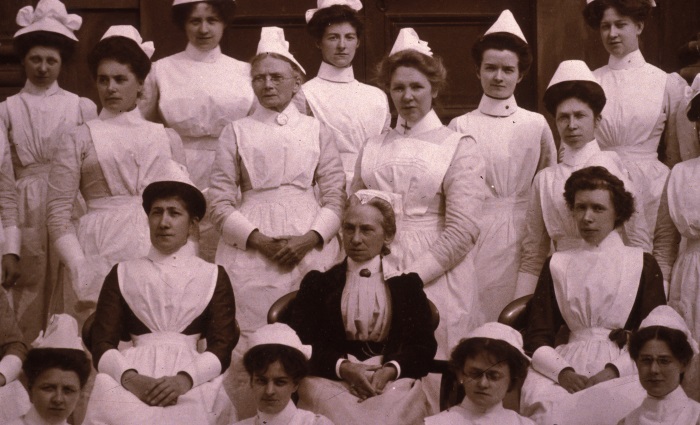
Rebecca Strong and William Macewen had both been inspired with enthusiasm at the original source. Strong had been trained in the Nightingale Training School in St Thomas's Hospital and helped Miss Nightingale to organise the nursing service at Netley Military Hospital. She became Matron of Glasgow Royal Infirmary in 1879.
Sir William Macewen had been one of Joseph Lister's surgical dressers. Each needed the other. Macewen performing new operations under strict asepsis needed intelligent trainable nurses to tend his patients. Mrs Strong needed Macewen, a renowned surgeon to help forward her plans to raise the standards of nursing.
I look on you and the nurses as part of myself and any honour which might be conferred on me is something which should be shared by you
Macewen writes after his triumph on the presentation of his paper on osteotomy (the procedure to straighten limbs bent by rickets) at the Congrès International des Sciences Medicales in 1884 to Mrs Strong.
He writes of his great reception 'because I know you will be pleased to hear then as you are so mixed up with everything I do in the surgical way. I look on you and the nurses as part of myself and any honour which might be conferred on me is something which should be shared by you'.
Mrs Strong did resign in 1885 and became Matron of a private nursing home. The Royal Infirmary Board would not build a residential home for her nurses. Macewen missed her and was determined to see her ideas and innovations succeed. By 1893, the nurses' home had been built and Mrs Strong was back in office in the Royal Infirmary. She set up her first probationer's training course in January of 1893, allocating nurses time for lectures and study. The course consisted of six weeks of lectures on anatomy, physiology and hygiene with examinations and class certificates for each subject. This became the pattern of nursing schools throughout Britain and overseas as Mrs Strong travelled widely and became internationally known for her pioneering work.
Student nurse
Florence Nightingale's Nursing School continued to influence nurse training. Until the 1960s, the ward sister controlled the ward in which student nurses learned. Consultants were classified as visitors and had appointed times to conduct their rounds. The ward was closed to allow the patient to rest. Rigorous routine, the basis of the apprenticeship training was argued to have become restrictive. In the early 1960s, reform was sought and the timetable of the ward revised. Hospital life was to be nearer to home life, with longer sleeps in the morning and rest during the day.175
Ms Olivia Brittian and Ms Ann Jarvie remember their training at the Victoria Infirmary and the Royal Infirmary.
Yes, I started nurse training in 1963 in the Victoria Infirmary, in the southside of Glasgow. In those days, all nurses were trained in a hospital and you just chose the hospital that you wished to go to. I chose the Victoria Infirmary in actual fact as they treated my brother after a bad accident and actually saved his arm and I felt that they were a good hospital and the training in 1963 was very much ward based. You had opportunities to go into the classroom and learn but then most of your actual education or training was on the wards themselves and it was very much a 24/7 training in that you had to do day duty, night duty, evening shifts, split shifts and you could be on night duty and have to come off in the morning and go for lectures, because if you were in the middle of a medical block, maybe a consultant would be coming to teach about a particular disease process. I did a four year course because I combined both general nursing and orthopaedic nursing just because I was just a few days seventeen when I started the course.176
Ms Jarvie remembers being resident at the Royal Infirmary
We were also resident. We had to live in for at least the first year. You could get permission to live out in the second year providing you were going to live at home. And you could get permission to live out in your third year in a flat providing your parents gave permission for that to happen. So we knew each other very well because we were resident and in those days when you were on night duty as a student nurse, you didn't stay in the nurses' home in the Royal you went down to Belvidere, meant to be quieter and that you would get sleeping during the day. But I think the relationship between, doctors and nurses was substantially different in those days because everybody worked longish hours. Because people were resident they got to know each other in quite a different way and there was quite a bit of social activity within hospitals so it felt very much being part of a team.177
Contrast with the recollections of Dr Marjorie Allison and the story of her mother at Belvidere in 1930s.
Following recommendations in the Briggs Report (1972) that there should be an extension of graduate training in nursing, a joint committee of the University and the Greater Glasgow Health Board was set up to consider the possibility of introducing a degree at the University. Professor Edward McGirr was Dean of the Faculty of Medicine at this time. It was thought there was a local need for the course and likely that sufficient numbers would apply. The course was to admit up to 25 students to the four year course which would lead to the award of an ordinary degree. The course would combine academic study and professional training.
The degree would confer the status of Registered General Nurse and be recognised by the General Nursing Council for Scotland. Teaching was to be carried out by the University and hospitals in the Greater Glasgow Health Board area. In addition, students were to attend an introductory course of four weeks to gain an insight into patient care in hospitals and health centres and the responsibilities of nursing and the allied professions. This was established with the help of the General Medical Council for Scotland.178


